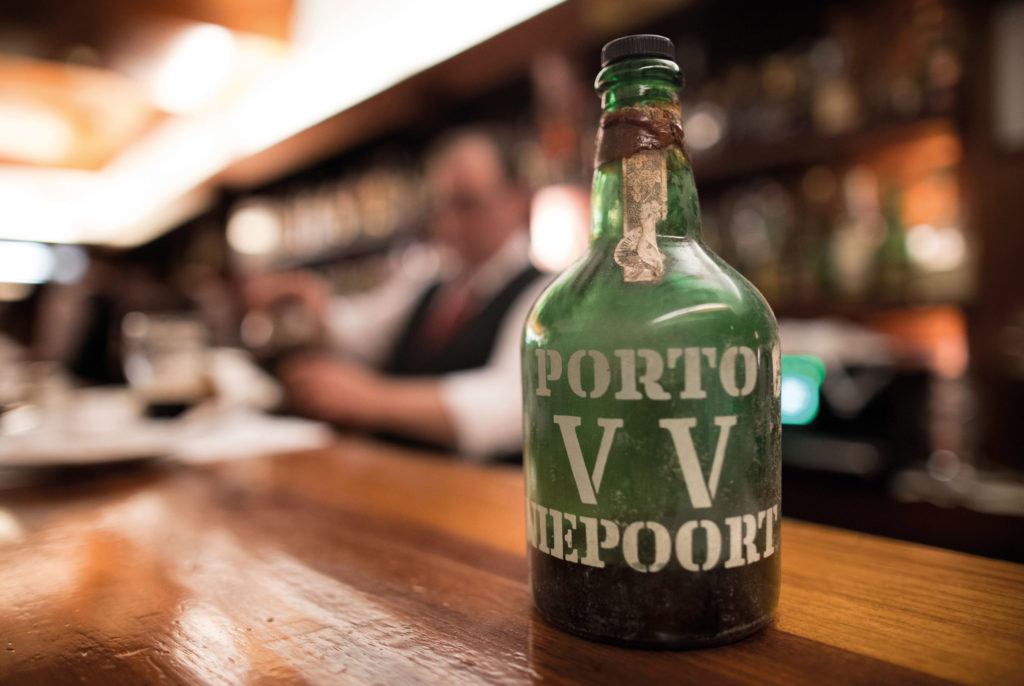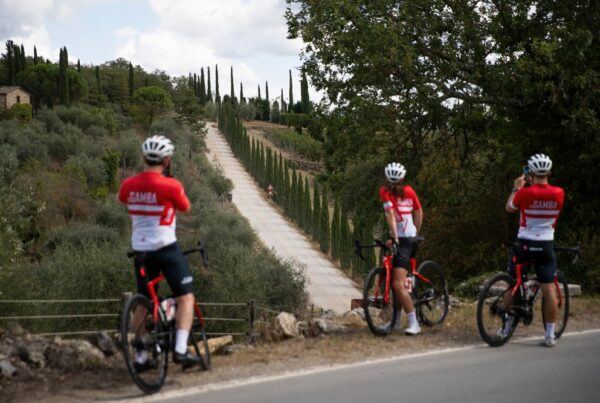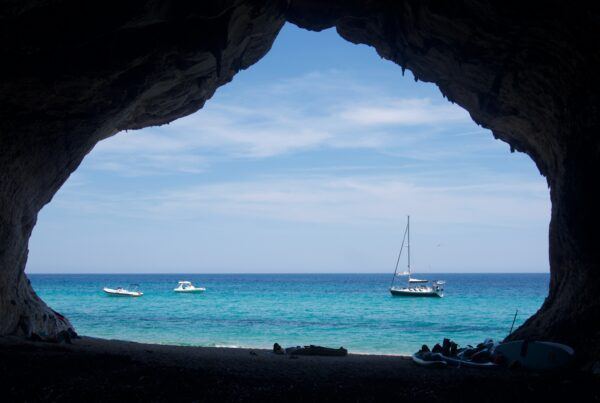Whenever I’m in Lisbon, Gambrinus is the first place I go. I was first introduced to it by inGamba’s founder, João Correia, who has been a patron since he was in short pants, when his grandfather was a regular. João’s a good man to have around when it’s time for dinner, and though we’ve eaten together in plenty of memorable places around the world, few have made the same impression.
I’ve been there with João and his friends, and I’ve been there without him, taking full credit for finding the place while looking over my shoulder to make sure he wasn’t there and about to call out my bullshit. I’ve been there to celebrate birthdays, for quick drinks, and for long nights out that involved mountains of food and too much wine. Which is impressive, because in a dozen visits, I’ve never made it as far as the dining room. I leave that to the loud Russians and to the old money in fur.
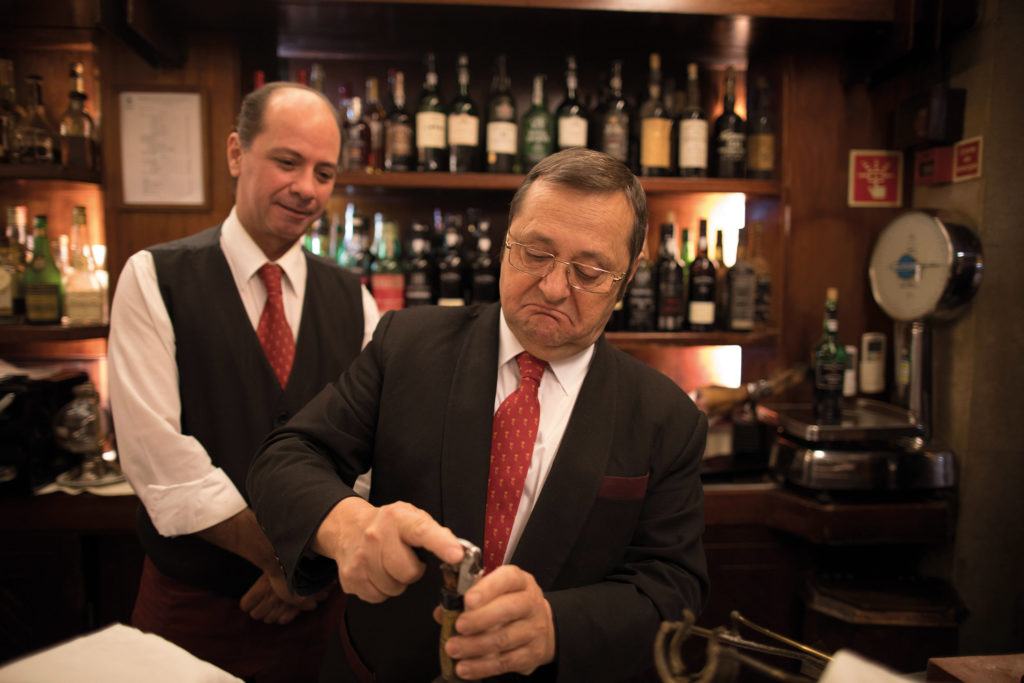
No, the bar is where you want to be, sat on a plush leather stool at the long counter, with its impeccably white place mats and old silver cutlery, where you’re as likely to be rubbing shoulders with some local workmen enjoying a beer and talking about soccer as some well-dressed businessmen, exploring the considerable wine list and testing the limits of their expense account.
There’s an ice counter by the door, overflowing with oysters, lobster, crab and whatever else the city’s fisherman have brought up out of the Atlantic that day. But to start, there’s always something more humble: Toast, slathered thick with salty butter, melted and translucent, a coating of golden goodness that covers every inch of the bread.
After that come plates of wonderful shrimp, generously seasoned to complement the sweet flesh. Served by weight, quick hands whisk them from the scales on the bar to the kitchen and back again in an instant, piled plainly on a white plate without so much as a sprig of parsley for garnish. It’s the kind of dish that you could only ever get from someone who was almost carelessly confident, and it’s perfect, just the way it is.
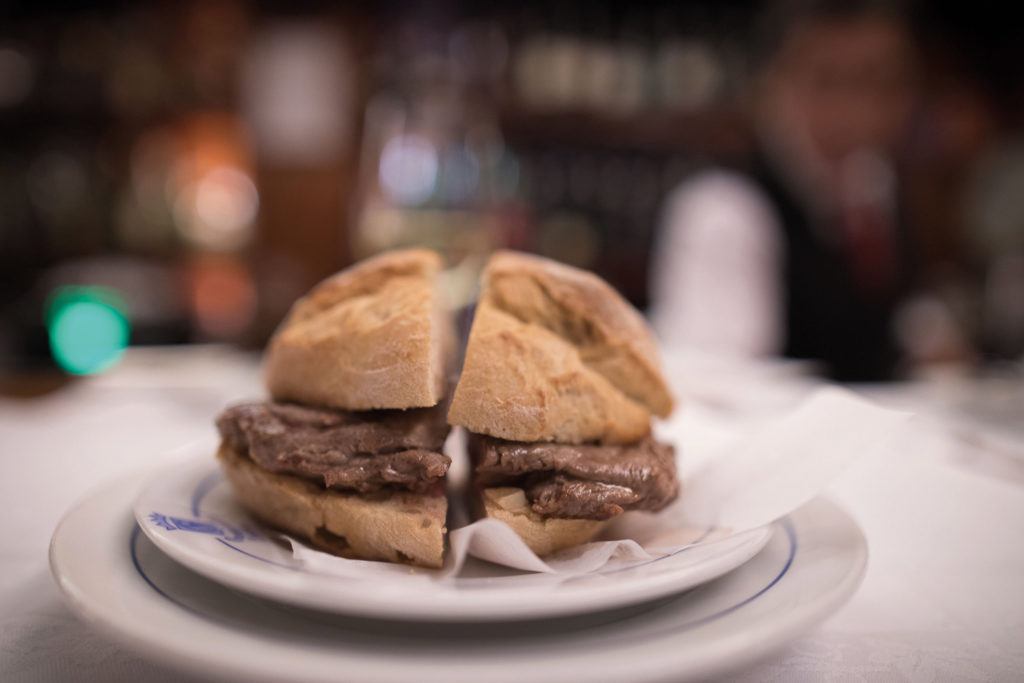
The ensuing steak sandwich, that follows the appetizers as surely as night follows day, is similarly simple: A rotund little bread roll, stuffed with fleshy slivers of beef, with the crisp crunch to the crust contrasted by the moist, spongy bread inside, soaked in the pinkish-brown juices of the meat.
For desert, old port, nestled carefully in a decanting cradle of burnished wood and polished brass, both of which bear the patina of a long life that matches nicely with the dusty bottle. The steady, slow hand of the waiter uses a winch to tilt the bottle, leaving decades of sediment undisturbed as he patiently fills our glasses.
Coffee comes piping hot from an old glass vacuum pot that’s almost certainly older than I am. It looks like a science experiment, and takes care and time, the anthesis of the quick shot of espresso I prefer every place else. This is as much about theatre as it is about caffeine, another little tradition of theirs that they’re sticking to like glue, and one that ends the meal perfectly.
It’s always important to make a distinction between fashion and style. One is fueled by fad and fancy, the other by taste and experience. It’s OK to flirt with the former from time to time. We all like to try new things. On the whole, however, it’s always better to be stylish than fashionable. That applies not just to the clothes we wear, but also to the bars and restaurants we frequent. Taste should prevail over trend every time.
There is no need to ask for wifi at Gambrinus. It’s not the place to stare at a phone or work on a laptop. There’s no TV or piped-in pop music. None of that is meant to imply that its dead or dying inside like some hole-in-the-wall bar that couldn’t keep pace with the rest of the city. Gambrinus could have followed fashion, it just chose not to. It’s the wonderfully rare kind of establishment that, by preserving the best of the past, shows us an attractive alternative to our present. Somewhere you go to talk and enjoy good food, without a selfie stick in sight.
It isn’t the only hidden gem waiting to be discovered amongst the hustle of Lisbon’s streets, either, but it is my favorite. It’s a place out of time, untouched since the dark wood panelling and the stained glass were installed back in the early 1960s. Some of the staff have been around almost as long. And I hope they’ll still be there for some time to come, because I don’t want any of it to change.
–
